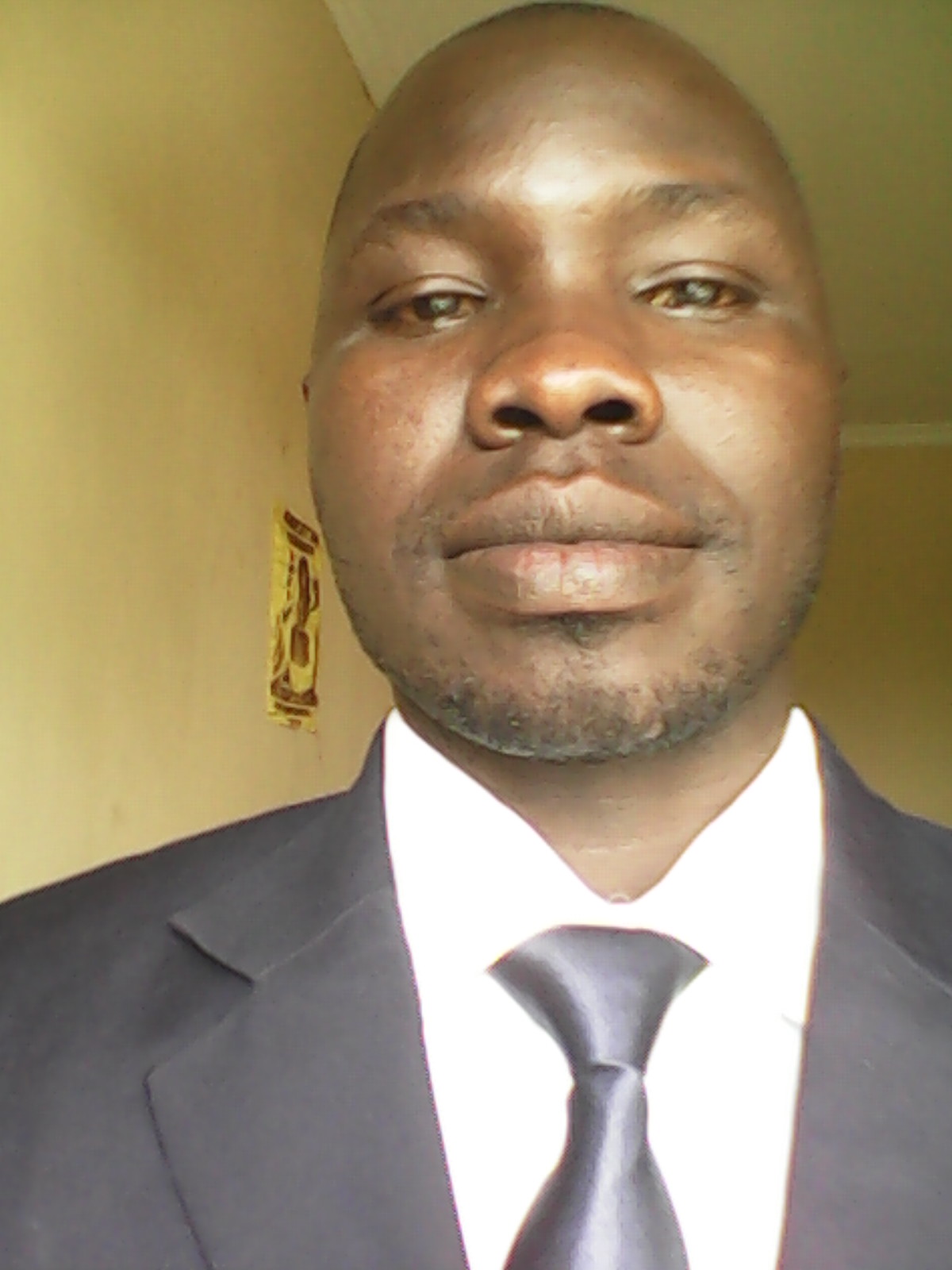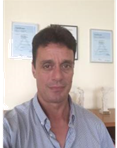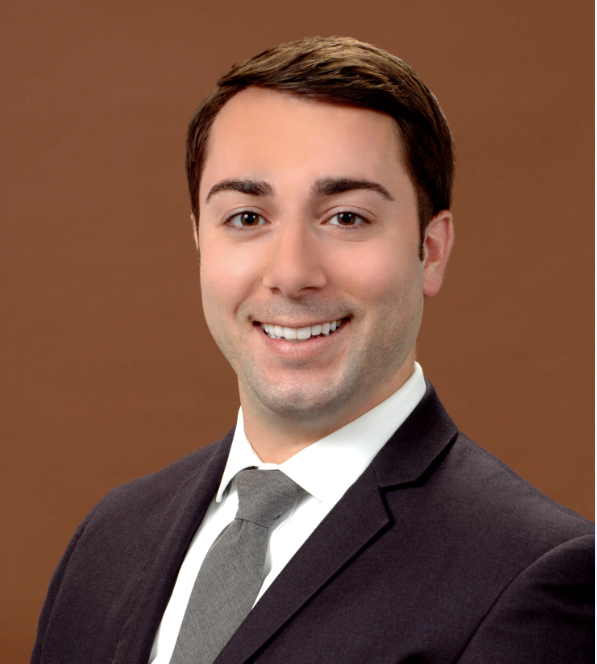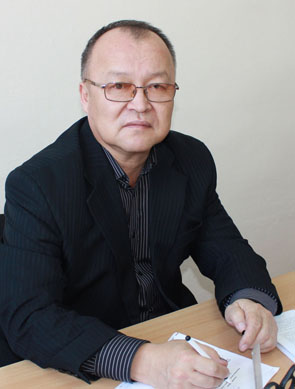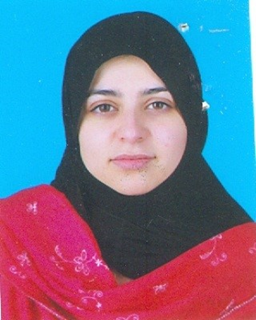Conference Schedule
Day1: April 23, 2019
Keynote Forum
Dr. Hrvoje Lalic
MD, Ph D, Professor, Specialist in Occupational and Sports Medicine | Health Centre Rijeka and Medical Faculty University Rijeka, Croatia
Title: The Key Role of Occupational Medicine Specialist as an Expert Witness in National and International Law Suites

09:00 - 09:45 AM
Biography
Hrvoje Lalic was born in Rijeka, Croatia in 1960. Medical school University Rijeka finished in 1983 and worked as the general practitioner in the Health Center Rijeka for ten years. Specialization in Occupational Medicine has done partially in Zagreb, Croatian capital city, in internationally famous School “Andrija Štampar” that is under the WHO patronage and partially in Bologna, Italy at “Policlinic S´Orsola Malpighi, OM school for specialization. Scientific and educational career he built parallel with his practical work in OM surgery. He participated World Congresses, OM Congress in Moscow – plenary lecture, San Marino Italy, Dubrovnik and Hvar in Croatia etc. Invited lecturer in Trieste – Italy – 10 hours of Lectures for medical students, doctors, and professors, an active participant in Erasmus+ Program, speaker – 10 hours of lectures in Umeä, Sweden, 10 hours in Bologna, Italy. In the 2017 University of Vienna – 10 hours of lectures. In 2018 invited “Key Note” lecturer at EuroSciCon Conference in London, U.K. First author of the papers published and cited in international journals, tracked in Pub Med Medline, CC, SCI and Open Access.
Now is working at the Dpt of OM Medicine Rijeka like a specialist in Occupational Medicine and Sports Medicine and regular professor of OM at Medical School University of Rijeka, Croatia. In 2018 received permanent title of regular professor.
Abstract
The Occupational Medicine specialist has a key role in the assessment of one’s capacity to work, as well as their incapacity, temporary or permanent. This assessment is a very responsible task and there is always an unsatisfied party, the patient or the authorities, as well as the lawyers. The aim of this paper is to demonstrate the importance of the expert witnesses’ complete neutrality. They have to assess the patient’s work capacity completely objectively and in doing so have to cancel out their emotions and the potentially uncomfortable feeling whilst confronting the team of experts representing Croatian Institute for Health or Pension Insurance.
Here are presented 4 cases of expert witnesses where unsatisfied patients pressed charges against the Croatian Institute for Pension Insurance. The first is the case of a person with dual nationality Bosnian and Herzegovinian and Croatian, the resident of Austria, who sued the Croatian Institute for not being granted pension for the disabled. The second is a 37 years old woman, a shop assistant who suffers from lumbar disc hernia and claim she cannot lift weight in the grocery shop. The third is the case of a 27 years old woman who has no forearm and two toes on each foot but was proclaimed capable of independent living. The fourth is the case of a fashion tailor who suffers from a severe case of epidermolysis bullosa hereditary, she states she is fighting for her life, but was proclaimed capable of working. They too sued the authorities.
In the first two cases, the expert witness for occupational medicine decided that the Croatian Institute made a correct decision and the last two cases were won by the patients. Such law battles are fought daily and courts are overburdened by them. On one side the patients (the claimants) are too subjective and think that their state is the heaviest and on the other side the Croatian Institute for Pension and Health Insurance with very limited means, is laden with applications for the pension for the disabled. However, the limited means must not be the reason for a truly ill disabled person who cannot work anymore, not to be able to retire. On the other side, those who can still work or would like to gain undeserved benefits must be refused their applications. Incomplete medical examinations are another frequent cause for such claims being rejected by the Croatian Pension and Health Institute.
To conclude, the Occupational Medicine specialist as an expert witness successfully solves all the unclear cases of work in/capacity. The Occupational Medicine experts should be included in Croatian Institute for Pension teams in order to avoid unnecessary court expense and to adequately assess the patients.
Prof. Anna Tompa
Deputy Director | Professor | Semmelweis University Department of Public Health | Hungary
Title: Cytogenetic and immunotoxic effects caused by occupational formaldehyde exposure among pathologists and their assistances

09:45 - 10:30 AM
Biography
University: Semmelweis University Faculty of Medicine 1964-1970.
Institute of Pathology and Cancer Research: Assistant Professor: from 1970 to 1979.
Eppley Institute Omaha NE. visiting scientist: from1976 to1978.
National Institute of Occupational Health: chief scientist, from 1979 to 1998.
DKFZ, Heidelberg: visiting scientist (annually one or two months) from 1986 to 1989.
National Institute of Chemical Safety: director from1998 to 2005. At present: Research Director.
Semmelweis University Department of Public Health: professor and director from 2005 to 2010. At present, she is now the Deputy Director, Professor Emeritus.

Abstract
Formaldehyde (FA) is a widely used chemical, what is classified by IARC, as a human carcinogen based on several sufficient scientific pieces of evidence. Several studies concluded FA is mutagenic and genotoxic in different experimental settings and also cause cancer to human during long-term Occupational exposure. In our study, we have examined 73 individuals (59 women and 14 men) worked for the pathology department in different hospitals as a pathologist or histological assistants. FA ambient air concentration level was measured in only in one unit of four, what was ranged from 0.4 mg/m3 to 1.1 mg/m3, with a mean formaldehyde level of 0.9 mg/m3. The average exposure time varied between 12-20 yrs. Blood samples were collected by venipuncture. The donors took part in a routine clinical laboratory check-up and were interviewed by a physician to take up an anamnesis data sheet on age, medication, smoking, drinking habits, medical and working histories. The end-points of the genotoxicology monitor included the determination of the frequencies of Chromosome Aberrations (CA) and Sister-Chromatid Exchanges (SCE) and the measurement of UV-induced unscheduled DNA repair synthesis (UDS). The percentages of Premature Centromere Separation (PCD ) and high-frequency SCEs (HF/SCE) were also scored. Apoptosis, immune-phenotype and cell proliferation parameters were determined by flow cytometry. The average age of exposed donors was 43 yrs, compared to 146 (34 years old) historical controls and 86 industrial controls (34 yrs old).
In the exposed groups the results showed elevation in chromosomal aberrations, DNA repair, and SCE value, although the apoptotic rate of peripheral blood lymphocytes was decreased especially among men, after in vitro PHA stimulation of PBL cells. Immunotoxic effect of FA was also demonstrated and immune suppression varied on cytotoxic T cells and NK cells in the different rate of exposed groups.
In our study demonstrated the early genotoxic and immunotoxic effect on different occupationally FA-exposed groups, giving an evidence for intervention and improve the working conditions. Based on our study we are going on to force the Hungarian hospital management to replace the FA with other less harmful fixatives in pathology units.
Mr Lorenzo Gallo
CEO of NextWave Safety Solutions, New York, USA
Title: Focus Five: Are We Prepared?

10:30 AM - 11:15 AM
Biography
Lorenzo is the CEO of NextWave Safety Solutions, Inc. known as a safety and risk management expert who has drafted safety regulations for the City of Philadelphia, the fracking industry, fire and building codes for the City of New York as well as the first active shooter trainer curriculum.
He manages site safety managers and coordinators who help promote job safety and meet required building codes and has revolutionized the construction safety tech industry leading with real-time data analytics, geo-located wearables, and virtual reality training.
Additionally, Lorenzo directs several probation and parole projects for at-risk and recent release youths known as Rising Up and Man Up as well as several veteran training, employment, and career programs. Prior to his role at NextWave, Lorenzo was the managing director at Lehman Brothers and holds an MBA from Wharton and a BA in business finance from Pace University.
Abstract
Workplace violence, including incidents of mass shootings, is unfortunately on the rise. Given the increase in frequency and lethality of these events, employers, Health and Safety professionals and the businesses that they represent must take a proactive approach to keep their workers safe. We must collectively develop a new baseline and best practices to act as the first comprehensive workplace violence action plan.
The frequency of active shooter and workplace violence incidents are on the rise; it is our fiduciary responsibility as business owners and human beings to provide the safest work environment that we can for our employees. Emergency preparedness and active shooter survivor scenarios lack a consistent, standardized training.
The Health and Safety Industry needs to evolve to counter this unfortunate new normal. Workplace violence is unique as a job hazard because unlike other hazards it does not involve a specific work process or function. Workplace violence, because it begins and ends with people themselves, is much harder to engineer away than falls, slips, trips, caught bys, struck-bys, or electrocutions, the "Focus Four."
To begin, our industries require new workforce and workplace training, an investment in safety leadership, and consistent reinforcement. Comprehensive emergency preparedness and workplace violence prevention and response training must include a 'Stop the Bleed' component to provide essential content covering event aftermath. Topics such as emergency medical assistance, CPR/AED, crisis communication, grief counseling, and corporate strategies to continue working operations deem inclusion in a workplace violence action plan.
Dr Hazem Gallagher-Alagha
HOD of Occupational Medicine in Qatar Airways Clinic in Doha | Honorary Clinical Lecturer as the University of Glasgow | Scotland
Title: Are the outcomes of Health Surveillance predictive of development of new cases of Hand Arm Vibration Syndrome?

11:15 AM - 12:00 PM
Biography
Dr. Gallagher-Alagha has completed his membership of the Faculty of Occupational Medicine of the Royal College of Physicians of London in 2015. He is the Head of the Department of Occupational Medicine in Qatar Airways Clinic in Doha. He is an Honorary Clinical Lecturer at the University of Glasgow.
Abstract
This study aimed to establish whether the results of repeat Health Surveillance (HS) for Hand Arm Vibration Syndrome (HAVS) are predictive of the development of new cases and the progression of existing cases of HAVS amongst exposed employees.
A secondary objective is to evaluate the effectiveness of control measures for Hand-Transmitted Vibration (HTV) exposure. The study describes and analyses trends of HS scores over 10 years. The use of previous HS records allows for the retrospective analysis trends of annual HS results and scores.
The aim of this presentation is to demonstrate that the number of new cases of HAVS in the exposed population declined sharply between 2003 and 2007 and continued to decline, albeit it at a lesser rate between 2007 and 2012, Using HS scores as a linear function of time, the results suggest that scores consistently decreased over time and that the influence of time on the scores was highly significant in all cases.
Annual HS for HAVS is, to an extent, predictive of the development of new cases and the progression of existing ones amongst exposed employees. Furthermore, it can be demonstrated that control measures are relatively effective for Hand-Transmitted Vibration exposure.
Tracks
- ENVIRONMENTAL SAFETY AND OCCUPATIONAL HEALTH
- Occupational Industrial Safety and Hygiene
- Occupational Public Health and Safety
- Occupational Health Psychology and Work Environment
- Occupational Health and Hazards
- Occupational Health and Safety Administration
Location: Berlin, Germany
Chairul Salam
Istanbul Technical University, Turkey
Title: Risk Assessment Analysis of Coal Mine Accident in Indonesia
TBA
Biography
Chairul Salam has been a candidate of his PhD from Istanbul Technical University. He is the lecturer of the department of mining engineering, ITERA in Indonesia.
Abstract
Abstract
For all forethought, mining persist the eminent unsafe work activity, and in Indonesia, coal mining industry is one of the most unsafe work for occupational injuries. Injuries are refined cases with many components that influence activity, and statistical investigation of injury records able to acquire worthful entropy that could avoid such injuries. In this research, a regression analysis method was employed occupational accidents in Indonesian coal mine during 2016. The injuries data were classified as working time, location area, age, job experience, position, cause of accidents and regression statistic method was applied for data analysis. Regression analysis was applied to indicate the amount of injuries that ensued in categories. It is initiated that the work with the most eminent measurement of accidents was the operators in the mine pits because of act as not secure as the cause of accidents. The workers were principally disclose to injuries actuated by dangerous work environment, and the down motivation as a personal factor have the most eminent risks. At last, a formula for estimating the amount aspect of accidents was deduced. Then, the formula was employed to define the crucial accident components.
Ronald Kareodu
Clarke International University, Uganda, East Africa
Title: Low Level of Adherence to Disaster Preparedness Measures among Health care Workers at Kilembe Mines Hospital in Kasese, Uganda: implications for Public Health Emergency and Disaster Management
TBA
Biography
Ronald Kareodu completed BSc. Public Health at Clarke International University and MPH (Population and Reproductive Health from Uganda Martyrs University. He is a Research Associate at Nations Rescue Team Uganda (NRT-U). He worked with GOAL Uganda in Kampala, Headquartered in Dublin Ireland UK. Participated in drafting HIV/AIDS IEC/BCC manual for Republic of South Sudan (IOM). Worked with MasterCard Foundation DYNAMIC programme in Uganda. He is co-investigating in ten Masters Research projects. Oral Presentation at 18th Annual Scientific Conference by Uganda Society of Health Scientists 2nd-3rd August 2018, Kampala and received an award for the best abstract for Health System Strenghtening.
Abstract
Public health disasters remain a significant problem in both developed and developing countries. In healthcare settings, information on level of disaster preparedness is scarce. We assessed the level and correlates of healthcare workers’ adherence to disaster preparedness measures.
This cross-sectional study involved 122 healthcare workers. Participants were sampled by convenience method while data was collected using structured questionnaire, key informant interviews, and observation check-list. Univariate, bivariate, and multivariate analyses were conducted on quantitative data at 5% significance level in STATA, while a thematic network analysis was performed on qualitative data in ATLAS.ti.
Of the 122 participants, 52 (43%) were males, 64 (53%) were aged 25-34 years and 92 (75%) were clinical staff. 11 (9.0%) adhered to disaster preparedness measures (95% CI [confidence interval]: 0.05-0.16). In bivariate and unadjusted analysis, periodic staff meetings on disaster issues (p=0.002), periodic electrical checks (p=0.006), periodic risk and vulnerability assessments (p<0.001), and knowledge on right measures for likely disasters (p=0.016) were significantly associated with adherence to disaster preparedness measures. Via stepwise multivariable logistic regression analysis, periodic risk, hazard and vulnerability assessments (Adjusted Odds Ratio (AOR), 14.29; 95% CI, 3.20-63.83; p<0.001), and knowledge on correct measures for likely disasters (AOR, 11.56; 95% CI, 1.33-100.66; p=0.027) were significantly associated with adherence to disaster preparedness measures.
Adherence to disaster preparedness measures is low at Kilembe Mines Hospital. Train healthcare workers on various disasters and their public health implications and management, Conduct periodic hazard, risk and vulnerability assessment, equip health facilities with necessary materials and supplies to facilitate preparedness.
Location: Berlin, Germany
Vasileios Boursinos
National Technical University of Athens Greece
Title: Occupational risk assessment in steel manufacturing plant.Optimal investments decision-making point
TBA
Biography
V. Boursinos has been graduated from the National Technical University of Athens Greece in1992, as a Chemical Engineer. He has worked as QC/QA Mngr in Plastics Industry for 5 years, also as Operatonal Mngr for an international Group of Co for 17 years. He recently took over the role of the General Manager for an American Packaging Business in Greece.
Abstract
This paper primarily focuses on the precise determination of the optimal point an administrative investment in occupational risk prevention can be implemented (see fig. 2). This kind of research is considered quite crucial for risk management science, in general.
In the present case study, the industrial risks’ causes in a specific steel manufacturing site are defined, assessed and quantitated. Each production dept. risks along with their root causes are graphically representated, also all departments’ risk is rated, in order to recognize the section with the highest risk that has actually to be given the most attention.
The time the steel plant management is required to decide whether to go for further risk prevention measures or keep working under the existing conditions is clearly defined in this study. The work accidents’ cost elements are deeply broken down, in a way to efficiently investigate all the factors that heavily affect the accidents’ compensations expenses.
Extended analyses of the applied methodology as well as a reference to topics for further research are provided as well.
1
Location: Berlin, Germany
Max Lum
Instituee of Occupational Safety and Health, Centers for Disease Control, Washington, D.C.
Title: Using Wikipedia for Improved Global Dissemination of Evidenced-Based OSH Information and Expanded Audience Engagement: The Good, the Bad and the Really Ugly.
TBA
Biography
Biography Dr. Lum, a graduate of the University of Southern California, is the e-communication and research translation senior advisor to the National Institute for Occupational Safety and Health (NIOSH), Office of the Director where he connects with communities, partners and organizations helping to navigate the digital space and creating new channels for providing science-based occupational safety and health information for engagement, action and impact. Dr. Lum served for fifteen years as NIOSH’s Communication Director. His most recent publication: Communicating Occupational and Environmental Safety and Health Information Effectively: A Practice-Based Approach. In Koh, D., Textbook of Occupational Medicine Practice, World Scientific, Singapore (2017).
Abstract
Background. Wikipedia a collaboratively written, web-based encyclopedia that is the dominant online global reference for patients, health providers and the public. Wikipedia ranks as the seventh most accessed web site with over 18 billion page views in 2017. This presentation provides an overview of “lessons learned” concerning the systematic editing of Wikipedia by the National Institute for Occupational Safety and Health, (NIOSH-CDC) to stimulate OSH information dissemination to a global audience.
Methods. This presentation is guided by an evaluation of the results of how traffic to Wikipedia articles correlate with traffic to the main NIOSH-CDC web site, how page view statistics compare to organic search and other web site drivers disseminating occupational safety and health information. Over a two-year period investigators compared Wikipedia’s occurrence, content, mean position, key edit factors, long tail search results, edit comparisons, and topic page views to other web sites, and examined which factors influence audience engagement.
Findings. By developing and implementing a carefully crafted online strategy Wikipedia, with the exception of organic search has become the major source of driving searchers of OSH information to the NIOSH web site after organic search Wikipedia is the most important driver of visitors to the Institute’s web site
Implications. The rank of a web sites among search engines results depends on search engine algorithms and search engine optimizations strategies (SEO). Wikipedia enhances search algorithms. A well-managed, secure Wikipedia editing activity has the potential of enhancing the global delivery of free, high quality, up to date OSH information.
Location: Berlin, Germany
ALENCAR, MARIA DO CARMO BARACHO DE
Federal University of Sao Paulo, Brazil, Federal University of Sao Paulo, Brazil,Federal University of Rio Grande do Sul, Brazil
Title: The suffering of nutrition attendants affected by low back pain in a Public Hospital
TBA
Biography
Maria do Carmo Baracho de Alencar is an Associate Professor and member of Health, Education and Society Department, Institute of Health and Society of the Federal University of Sao Paulo (UNIFESP), Brazil. Álvaro Roberto Crespo Merlo is a Full Professor at Federal University of Rio Grande do Sul (UFRGS), Brazil.
Abstract
This study aimed to understand the relationship between work organization and the low back pain of nutrition attendants. This is an exploratory, descriptive and qualitative study. There were a survey of absenteeism in a public hospital in Porto Alegre, Brazil, from June 2015 to June 2016 and the Food Distribution Section was selected because of the high prevalence of work-related musculoskeletal disorder (WRMSD) in the period. A structured questionnaire was used with sociodemographic, work and health data, and individual interviews were conducted with those with low back pain. The interviews had a media time of 1hour, and they were integrally transcribed for thematic content analyses. Ten (10) interviewers participated in this study, all female, aged between 29 and 60. The majority had a time of practice in the profession for over ten years (n=6), and for the rest this time ranged from 3 to 10 years. The results obtained demonstrated ways of organizing work with overloads, the presence of musculoskeletal pains in day-by-day work, excessive collections, 'privilege games' and power games, and lack of recognition at work. These situations influenced in the processes of illness due to the low back pain of these nutrition attendants, indicating a greater awareness of mental and physical health among this professional category.
Descriptors: occupational health; back pain; nutrition hospital service; mental health; psychology.
Location: Berlin, Germany
Victor Songmene
École de Technologie Superieure (ÉTS), University of Quebec, Montreal (QC), H3C-1K3, Canada
Title: Progress on Fine and Ultrafine Particles Emision, Dispersion and Control During Machining: cases of metals, composite, woods and granite
TBA
Biography
Pr Victor Songmene received his PhD from École Polytechnique de Montréal, Canada, in 2001. He has been with the Industrial Research and Development Institute (IRDI), Toronto, Canada, from 1995–2001. He is currently a full professor at University of Quebec, École de Technologie Supérieure (ÉTS), Montréal, Canada. Since joining the university he has put his expertise on developping sustainable and safe machining practices for industry. Past and current north american industries collaborating with him include A. Lacroix Granite, Sorel forge inc., MDA corporation, Generals Motors, Wescast Industries, RioTinto Alcan, Generals electrics and the Institut de recherche Robert-Sauvé en santé et en sécurité du travail (IRSST), one of the leading OHS research centres in Canada. Professeur Songmene’s expertise include metal cutting, fine and nanoparticle control, optimisation and environmentally conscious manufacturing. He is Director of the Product, Processes and Systems Engineering Laboratory (P2SEL). He has published more than 150 papers in reputed journals and has produced more than 50 technical reports for North American industries.
Abstract
Machining is necessary to shape parts but it is also an important source of pollution (such as dust and aerosols) and this constitutes hazards for machine-tools operators. The emission of dust and the overall shop floor air quality are of great concern when shaping dusty materials such as granite (containing silica) but also woods products, composites materials and metals. In recent times, the occupational health and safety regulations have become more severe. To quickly comply with new regulations, engineers and researchers must help industries in developing strategies to limit workers risk of exposure to these hazards.
This keynote presentation will addres progress on fine and ultrafine particle emission during machining and polishing of granite, metals, woods and composites. The focus will be on OHS aspects but also on the effects of machining conditions on machining shop floor air quality and means of reducing at the sources of these hazards without sacrifying the productivity and the machined part quality.
Location: Berlin, Germany
Dr. Jong-Bae Baek
Department of Safety Engineering Korea National University of Transportation
Title: Development of Enhanced Chemical Accident Response Plan in Korea
Biography
Abstract
The chemical hazard risk management plan is a comprehensive management system to protect local residents and the environment from chemical accidents through accident prevention programs as well as accident handling for each facility. In Korea, the system was introduced and implemented in 2013. This system is designed to prevent 69 types of accidents. Facilities that process more than the specified quantity should submit their accident prevention programs and emergency response programs every 5 years.
Target facilities are voluntarily creating and operating a chemical accident prevention system. As of 2016, approximately 2,000 business sites have established comprehensive accident prevention programs, which contributes greatly to accident prevention.
However, there are about 300,000 kinds of commercially available chemicals worldwide, and about 3,000 additional types are released to the market each year. The distribution of these chemical substances in Korea is increasing every year; from 175.4 tons in 1998 to 432.5 tons in 2010.
The number of chemical accidents in Korea increased from 9 in 2012 to 111 in 2015. The total number of material accident incidents from 2012 to 2016 was 164, and the number of accidents other than chemical substances was higher (n=179; 52.19%).
Therefore, we expanded the program by providing enhanced management measures, and developing "proactive chemical management." We have developed a manual and a countermeasure manual by adding additional substances prone to accidents. Through the analysis of cost, benefit, and regulatory impact of new substances that affect the industry, we enhanced the response management plan and provide the guidelines.
Sejong Bae
Division of Preventive Medicine, University of Alabama at Birmingham, USA
Title: Development of Enhanced Chemical Accident Response Plan in Korea
TBA
Biography
Dr. Bae has completed his PhD from University of Alabama at Birmimham. He went to work at a pharmaceutical company in the area of cardiovascular disease and imaging. After gaining industry experience, he was recruited to the University of North Texas Health Science Center as tenure track faculty in 2001, and was promoted to Professor with tenure in 2010. Dr. Bae returned to UAB in 2012 as Professor with tenure, and has since participated in and obtained numerous grant awards for studies that focus on occupational health, health disparities and cancer and published over 150 peer reviewed manuscripts.
Abstract
The chemical hazard risk management plan is a comprehensive management system to protect local residents and the environment from chemical accidents through accident prevention programs as well as accident handling for each facility. In Korea, the system was introduced and implemented in 2013. This system is designed to prevent 69 types of accidents. Facilities that process more than the specified quantity should submit their accident prevention programs and emergency response programs every 5 years.
Target facilities are voluntarily creating and operating a chemical accident prevention system. As of 2016, approximately 2,000 business sites have established comprehensive accident prevention programs, which contributes greatly to accident prevention.
However, there are about 300,000 kinds of commercially available chemicals worldwide, and about 3,000 additional types are released to the market each year. The distribution of these chemical substances in Korea is increasing every year; from 175.4 tons in 1998 to 432.5 tons in 2010.
The number of chemical accidents in Korea increased from 9 in 2012 to 111 in 2015. The total number of material accident incidents from 2012 to 2016 was 164, and the number of accidents other than chemical substances was higher (n=179; 52.19%).
Therefore, we expanded the program by providing enhanced management measures, and developing "proactive chemical management." We have developed a manual and a countermeasure manual by adding additional substances prone to accidents. Through the analysis of cost, benefit, and regulatory impact of new substances that affect the industry, we enhanced the response management plan and provide the guidelines.
Mark Fuellemann
Dr. Sc. ETH, Owner Practice & Experience Ltd., Baden/Switzerland
Title: The doubtful role of reward in improving safety at work: a case study from Indonesia
TBA
Biography
Mark Füllemann has completed his PhD from the ETH Zürich in 2016 with a dissertation on “Safety at Work – an issue of faily management behavior”. He was the head of Occupational Health & Safety of the Holcim Cedment Group and the OC Oerlikon Group. Today he advices management teams on their role regarding OH&S and lectures at the University of Applied Science of Northwestern Switzerland. He has given presentations at OH&S conferences worldwide.
Abstract
Performance Management has always two sides to it, the reward and recognition part and the consequence management part (this term substituting “punishment”). Behavioral science teaches that positive consequences have more impact than negative ones. It can therefore be assumed that reward and recognition elements in a Performance Management system support Occupational Safety better than elements of consequence management. A case study in a cement company in Indonesia showed however that even a well-structured and easy to use reward system for enhancing safety at work contains many potential pitfalls that make the value/effort comparison not attractive.
Day2: April 24, 2019
Keynote Forum
Dr. Haruna Musa Moda
HOD Occupational Safety Health and Environment | Manchester Metropolitan University, Department of Health Professions, Cavendish Building, Manchgester | United Kingdom
Title: Occupational Risk Perception Assessment among operators of Afro-Caribbean hair salon

09:00 - 09:45 AM
Biography
Dr. Haruna Musa Moda has completed his Ph.D. from Glasgow Caledonian University, Glasgow United Kingdom. He is the head Occupational Safety Health and Environment postgraduate degree programme. He has published several papers in reputed journals.
Abstract
Hair care professionals are seen as not high at risk job however the job can lead to varied form of occupational diseases that include skin conditions, musculoskeletal diseases (arthritis and tendonitis) and work-related asthma as a result of Occupational Exposure to varied potential Health Hazards within the work environment that include vapors, solvents, perfumes, dust. An online survey was used to measures Occupational Hygiene and Safety awareness among Afro-Caribbean hair salon operators in the UK. In addition, 5 salons indoor air quality were measured for selected environmental pollutants; temperature, humidity, CO, CO2 and Total Volatile Organic Compounds (TVOCs) using Graywolf Direct Sense IAQ (IQ-610). Different forms of hair treatment that include perming, dying, blow out, haircut, hair styling alongside manicure and pedicure dominates the participant’s response as the most common form of activities carried out daily at work.
Use of extraction fan was not common, only 28 (18.3%) of the respondents said, they have the extraction fan installed in their business premise. One of the salon air quality measured a very high amount of TVOC with an average reading of 8215.9 ppb and 5316 ppb (STEL) and Time-weighted Average (TWA) reading of 6955 ppb. The study outcome has demonstrated that activities types and hair products used plays important role in the level of pollutants found in the work indoor environment.
Hence, the need to substitute hair products considered more harmful with another that has lower classification and enlighten salon operators on the dangers of prolonged exposure to airborne pollutants at work.
Dr. Raeesa Moolla
Lecturer | School of Geography, Archaeology and Environmental Studies | University of the Witwatersrand, South Africa
Title: Occupational health risk assessment of exposure to BTEX pollutants at an international airport in South Africa

09:45 - 10:30 AM
Biography
Dr. Raeesa Moolla attained her Ph.D. at the age of 30, at the University of the Witwatersrand, where she is now a tenured lecturer. Her research interests lie in hotspot monitoring and modeling of urban-scale air pollution and its impacts on human health; specifically related to VOC emissions and pollution from the transport sectors.
She is also involved in surface and tropospheric ozone research and is a part of the International Global Atmospheric Chemistry project (a non-profit organization). Dr. Moolla currently has over 25 publications and conference proceedings to her name, with an additional five publications being reviewed.
I am currently involved in research related to air quality and human health impacts, as well as modeling climatic variability and its influence on air pollution and health; specifically involving organic compounds, both in the Occupational and Public Health domain.
Abstract
The airport industry is developing at an expeditious rate and plays a significant role in boosting a country’s economy. Although airports create employment opportunities; they are also known as pollution hotspots. Pollutants released from airports (amongst other pollutants); include a range of volatile organic compounds (VOCs), which are a highly reactive and toxic; namely the BTEX group (i.e. benzene, toluene, ethylbenzene, and xylenes).
Due to the high level of toxicity, an occupational health risk assessment was conducted at an international airport in South Africa to determine ambient BTEX concentrations and the potential health risks of employees. The sampling campaign was conducted during the winter season, as studies have shown a prevalence of BTEX concentrations during this season in South Africa.
The campaign adopted the use of Radiello Passive Samplers, with a sample group from ten different departments within the airport. Indoor concentrations of individual BTEX compounds (Figure 1) were above international air quality guidelines, indicating an Occupational Risk. Furthermore, high levels of BTEX concentrations were revealed in specific departments outside the main airport wing (viz. the paint shop, aircraft main apron, and waist area).
In general, the lifetime cancer risk (based on the US EPA standard of 1×10−6) was exceeded for all full-time airport employees. In addition, the hazard quotient risk was also exceeded in specific departments within the airport. Thus, the research recommends essential modifications within the airport departments be made to reduce future potential Occupational Health Risks for employees.
Dr. Muhammad Wasif Rashid Chaudhary
MBBS, MBA, CTQM, CSSGB, CPHQ Medical Director & Director Quality VMIH | United Arab Emirates
Title: Champions Role - Preventing & Controlling Healthcare associated infections and Complications

10:30 AM - 11:15 AM
Biography
Dr. Muhammad Wasif Rashid Chaudhary has 15 years of experience in Healthcare Executive Management and Leadership in the UAE. His role at Via Medica International Healthcare LLC is Medical Director with additional assignment as Director Quality. VMIH is American owned facility and head office is in DC Washington. VMIH has multidivisional services and CARF Accredited Facility.
Dr. Wasif has occupied many diverse roles in hierarchy Healthcare management in the past. UAE licensed General Physician and practicing medicine. Proactive and strong role in strategic Leadership, he has. He is a Certified Six Sigma Green Belt, Total Quality management and also holding a Prestigious credential i.e. Certified Professional in Healthcare Quality (CPHQ).
Dr. Wasif has achieved MBA degree from Delaware University, USA. His passion for Healthcare is to improve existing/current processes and systems by utilizing Quality Improvement tools which lead to Safe, Timely and high quality, effective care of the patients. He is the keynote speaker of many International Conferences, including USA and Canada.
Abstract
Healthcare Champions role to prevent and control infections in healthcare facilities by using advanced strategies and to decrease the transmission of infectious diseases from healthcare workers to patients and vice versa is very crucial.
We shall discuss evidence-based practices to understand why Hand hygiene, Isolation, standard Precautions and correct use of personal protective equipment (PPE) during the patient care are important, to reduce Healthcare-associated infections and Occupational Health Hazards.
Role of Quality improvement methodologies (FOCUS-PDCA & FMEA) and importance of implementations in healthcare facilities. Our focus will be on post-exposure Interventions to infectious disease in the Healthcare field and how to prevent and treat employee and also share guidelines for work restrictions to employees suffering from infectious diseases like Meningococcal Meningitis, HAV, HBV, HCV, HIV, MDRO, RSV, Varicella, TB, and Influenza.
According to the Centers for Disease Control and Prevention (CDC), results of a project known as the HAI Prevalence Survey (2014 Data) were published in 2016. The Survey described the burden of HAIs in U.S. hospitals and reported that, in 2011, there were an estimated 722,000 HAIs in U.S. acute care hospitals. Additionally, about 75,000 patients with HAIs died during their hospitalizations.
Dr. Oscar Cristito L. Rosete
HOD of Medical Unit of the Philippine Merchant Marine Academy | Philippines
Title: Occupational Health Safety Culture among Cadet Seafarers in the Philippines

11:15 AM - 12:00 PM
Biography
Abstract
Hence, this study aimed to assess the shipboard safety culture among cadet seafarers in relation to specific seafaring vessel types (tanker or bulk). This study primarily followed a cross-sectional research design. It aimed to assess and compare shipboard safety culture from the cadet seafarers’ perspective thru prevalence school-based survey using a Likert scale, and qualitative probing thru key informant interviews and a focus group discussion were conducted.
The cadet seafarer participants were chosen from the PMMA fourth year students enrolled for the academic year 2015-2016. Survey data gathered were treated with chi-square test (critical value of 0.05) while data gathered from KIIs and FGD were presented and analyzed by themes. Data gathered revealed differences in the survey scores; however, the bar graph of all the safety factors surveyed revealed a positive similar trend of shipboard safety culture onboard in both tanker and bulk vessel types.
Computed chi-square scores revealed no significant difference between the tanker and bulk shipboard safety cultures in all eight safety factors, although more unsafe work conditions/ acts and onboard Health Injuries/ accidents were reported among bulk respondents.
Tracks
- ENVIRONMENTAL SAFETY AND OCCUPATIONAL HEALTH
- Occupational Health and Preventive Care
- Occupational Health and Hazards
- Occupational Industrial Safety and Hygiene
- Occupational Health Medicine
- Occupational Public Health and Safety
Location: Berlin, Germany
Umer Hussain
Sui Southern Gas Company (LTD), Pakistan
Title: Analysis of Safety Awareness, Accident Prevention and Implementation of Behavior Based Safety Program in Energy Utility Firm
TBA
Biography
Occupational Safety, Hazard Identification and Accident Prevention is an area of deliberation, studies and ongoing researches. Conventional Safety Techniques in organizations place core responsibility of safety coordination and accident prevention on the shoulders of senior management. Nowadays, an alternative concept adopted by industries to involve employees / front line workers and identifying at risk behaviors to promote safety culture is Behavior Based Safety Program. BBS program is widely implemented in developed countries for identification of hazards and at risk behaviors, however, some studies and applications are conducted in Pakistan.
This research investigates the approach toward safety awareness and accident prevention in an oil and gas energy utility company. Data collection, Steps involved in establishing BBS culture and safety index trend chart are established to evaluate safety awareness. Results shows that after implementing BBS program a significant performance is enhanced as the safety index (SI) progressively increased up to 17% in period of four months. Employees demonstrated positive concerns towards safety and provide suggestion to strengthen BBS program as well.
Findings determine that BBS program is able to minimize accident in energy utility industries along with improving quality and creating safety environment.
Abstract
Mr. Umer Hussain has completed his Degree of Masters in Industrial and Manufacturing from a reputed University of Pakistan, NED University of Engineering and Technology. Along with studies and on job activities, he has been associated to an Energy Utility Firm (Logo Mentioned) where he got ful ground of research, design and implementation of Occupational Health and Safety Environment. Behavior Based safety is new methodology implemented in authors company. It ensure employees aware of their at-risk behaviors and make safety habitual for all concerns.
Co Author Mr. Hassaan Shoukat also completed his Degree of Masters from NED University of Engg. And Teach., Pakistan. He is working in a reputed manufacturing firm and support author with his academic and views regarding the implementation of BBS in manufacturing firms.
José Martim Marques Simas
Federal University of São Paulo, Brazil
Title: Workers´ health in Banana Farmings of Ribeira Valley, Brazil
TBA
Biography
José Martim Marques Simas is a master scientist, doctorate student at the Federal University of Sao Paulo (UNIFESP), Brazil, PPG Interdisciplinary in Health Sciences. Maria do Carmo Baracho de Alencar, Líria Yuri Yamauchi and Daniel Araki Ribeiro are PhD’s and professors at Federal University of Sao Paulo (UNIFESP), Institute of Health and Society.
Abstract
The aim of this study was to analyze aspects of health of banana cultivation workers in a region of the Ribeira Valley, Brazil. In a first step, a list of all families registered in the Family Healh Strategy Program of a Ribeira Valley were obtained. A questionnaire was applied to obtain sociodemographic, health and work data, as well as the Nordic Musculoskeletal Questionnaire (NMQ), the Self Reporting Questionnaire (SRQ-20), and the Pulmonary Function Test with the Spirobank® portable device was performed. In a second stage, individual recorded semi-structured interviews of workers are going on for content analyses. Thirty-six workers from 10 properties participated in the study, being the majority male (94.4%), aged 20 to 49 years old (75.0%) and 58.3% with low school degree. Of these, suffered a work accident in the cutting and loading of banana bunches (55.5%), presence of musculoskeletal disorders (94.5%), suspicion of common mental disorders (25.0%), and reported respiratory symptoms (33.0%) including dyspnea (58.3%). Most of them had direct contact with the handling of pesticides (91.7%), and reported not using all the personal protective equipment (30.6%). The study is going on, and five interviews were carried out with the workers. Among the qualitative results: musculoskeletal symptoms characterized as "normal", handling of loads in some tasks, need for employment, health risks due to the handling of pesticides, inadequacies of safety equipment, among others. The results indicates health risks in tasks of banana cultivation, especially in the cutting, thinning, loading and spraying of pesticides in Ribeira Valley.
Location: Berlin, Germany
Somendra Pal Rana
Director, Industrial Safety & Health, Labour Department, Delhi, India
Title: Computerized Risk Based Modern Inspection Mechanism Developed for Workplace Compliance in India
TBA
Biography
The author contributed in OSH in different parts of India and abroad. He worked as “Labour Inspection Specialist” in ILO in Bangladesh. He developed Standard Operating Procedures for the Inspectorate of Bangladesh and framed comprehensive checklist for inspections. Provided strategic advice and guidance on OSH policy and development of National OSH action planning and its implementation including building longer term OSH capacity in Bangladesh. He was actively involved in reviewing existing regulatory framework and laws and provided high-level technical advice on adjustments to relevant law(s), rules, and regulations related to labour inspections and administration. His several research papers have found place in national and international journals of repute and he authored a book titled “Handbook on Occupational Safety & Industrial Psychology”.
Abstract
Introduction: Field inspection for enforcing the governing OSH laws has remained a tough job in India. Most of the Labour Inspectors cannot perform their duties well due to lack of uniform and defined criteria for inspection. The challenges and opportunities during inspection and afterwards, needs to be understood and conceptualized. It becomes necessary to evolve a new inspection mechanism that will be unbiased and hassle free. It was also felt that proper structured inspection system will yield fruitful results and can be a tool for making the workplace safe and accident free.
Methods: A computerized risk based inspection mechanism was developed. The new licences to the factories were also given online and inspections for such factories were carried out through computerized selection criteria. More emphasis was given to industries involving hazardous process and dangerous operations. Directions to such occupational disease prone industries were given through notices for workplace compliance. Managements of such factories were asked to carryout workplace air monitoring and measure level of exposure for the chemicals used or manipulated by them to ascertain whether these are under permissible limits.
Result: Workplace compliance could be made possible through directions and written orders. Administrative and technical control measures undertaken by industries gave expected outcome. The occupational health problems were considerably reduced and the numbers of accidents in industries were also decreased significantly. Workers suspected to be contracting occupational disease were shifted from hazardous to non-hazardous areas. Continuous monitoring of such workers helped them in gaining their self-confidence and motivation to counter disease.
Discussion: The online application of entire inspection system brought efficiency in the working and helped in identifying the industries involving hazardous process and dangerous operations. Risk based selection of factories through computerization can be an effective tool in bringing down accidents, identify occupational diseases and lead to better workplace compliance.
Eric William Branning
Children’s Hospital of Philadelphia, United States
Title: Preventing Severe Employee Injuries from Patient Behavioral Events in the Health System
TBA
Biography
Eric W. Branning has completed his MBA from the Fox School of Business at Temple University, and an MA in Organizational Psychology from Rutgers University. He is an Enterprise Improvement Advisor in the of the department of Saftey and Medical Operations at the Children’s Hospital of Philadelphia, a premier pedeatriac research and academic medical center. He is a certified Lean Six Sigma Green Belt.
Abstract
Better understanding incidents of employee injury related to patient behavioral events (PBE) has helped identify potential interventions to protect staff from harm. The Children’s Hospital of Philadelphia (CHOP) is part of an Employee Safety and Staff (ESS) cohort of several pediatric health systems through the Solutions for Patient Safety (SPS) Children’s Hospital collaborative. The specific objective is to decrease CHOP’s PBE DART rate from baseline by 25% by June 30, 2019. Our baseline data was 0.293 at project kick-off. There are four work streams dedicated to improving the identification and knowledge of severe employee harm related to patient behaviors. We seek to identify innovative methods and practices to anticipate and lessen the occurrences of employee harm related to patient behaviors that will help with employee satisfaction as well as continuously allowing all healthcare professionals to provide high quality and safe care for their patients. The intended result is to reduce the PBE DART rate by 25% or better. This would be rate of 0.21975. The current PBE DART rate is well on track and exceeds the stated goal reduction. All hospitals in SPS have agreed that they will begin to standardize the way they review and investigate these injuries. We are working to eliminate staff Days Away, Restricted, or Transferred (DART) due to staff harm caused by patients. So far 43% of the PBE injuries involved a patient medically cleared and awaiting transfer at the time of injury. Further data review is forthcoming.
Location: Berlin, Germany
Ofonakara Uzochukwu
Enugu University of Science and Technology Nigeria
Title: Socio demographic Characteristics and perception of tobacco work and Hazards in a rural community of Nigeria
TBA
Biography
Dr Uzochukwu Ofonakara ,a public health physician,holds MBBS, MPH, MSc (epid), MSc Pharmacology and is currently on his PhD at the University of Lagos. He is the Delta State Coordinator, National Primary Health Care Development Agency, an agency under Federal Ministry of Health. He has presented at international conferences
Abstract
Introduction
One of the major preventable causes of death is tobacco use and tobacco workers are exposed to a lot of hazards including physical, chemical, psychosocial and biological hazards but unfortunately many are unaware of these hazards.
The aim of this study was to determine the Socio demographic characteristics and perception of tobacco work and hazards in a rural community of Nigeria.
Methodology
A cross-sectional descriptive study was carried out among 326 tobacco workers selected using a two-stage sampling method. Data was collected using anonymous pre-tested interviewer administered questionnaires adapted from Global Adult tobacco Survey. Odd ratios and 95% confidence intervals were computed and P values of < 0.05 were considered statistically significant.
Results
Of the 326 respondents ,4(1.2%) were between 11-20 years, 52(16.0% ) between 21-30 years,70(21.5%) between 31-40 years,88(27%) between 41-50 years,61(18.7% ) between 51-60 years,28 (8.5% ) between 61-70 years ,13(4.0% ) between 71-80 while 10 (3.1% )between 81-90.The age range of respondents was 20-70 years with a mean of 42.18 ± 15.412 years. Also, 264(81.0%) were males and 62(19.0%) were females. For marital status,83(25.5% ) were single,183(56.1%1.5% ) married, 5(1.5% ) divorced, 51(15.6%) widowed while 4( 1.2%) were separated. Also,113 (34.7% ) had only primary education,135(41.4% ) had secondary education, 28 (8.5% ) had tertiary education while 50 ( 15.3%) had no formal education. Only about half, 175(49.9%) knew that tobacco is dangerous to health, 250 people (76.7 %%) were aware that tobacco is associated with tooth decay while 65(19.8 %) were aware that it is associated with oral cancer.
Age ( p<0.0001), male gender (p<0.0001), and lower educational attainment (p<0.0001) were associated with poor perception of tobacco work and environmental hazards.
Conclusion
Efforts targeted at raising tobacco workers’ awareness of the health effects of tobacco are needed in rural communities. Programs should be directed at young males with lower levels of education.
Location: Berlin, Germany
Efua Ehiaguina
Manchester Metropolitan University, Manchester United Kingdom
Title: Assessment of Safety Behaviour of Oil and Gas Workers in the Niger Delta Region of Nigeria and its Impact on Personal Safety Response at Work.
TBA
Biography
Efua Ehiaguina hold a BSc degree in Micro-biology and MSc Environment, Safety and Health from Sunderland University and at present a first year PhD student in Manchester Metropolitan University. She is working towards publishing journal articles and other educational impact on this research topic.
Abstract
Interest in the development of appropriate safety culture in the oil and gas industry has taken centre stage among stakeholders in the industry. Human behaviour has been identified as a major contributor to occupational accidents where abnormal activities associated with safety management are taken as normal behaviour. Existing data revealed that the Nigeria oil and gas industry is ranked among the riskiest in terms of health and safety compliance, with workers often exposed to diverse occupational hazard that can result into fatality and mortality in worst scenario. Work-related death rate within the oil and gas sector in Nigeria has been estimated at around 24 fatalities per 100,000 employees, which is one of the highest in the world. To ascertain the impact of employees’ safety and how it impacts health and safety compliance within the local industry, online safety culture survey targeting frontline workers within the industry was administered covering major subjects that include; perception of management commitment and style of leadership; safety communication method and its resultant impact on employee’s behaviour; employee safety commitment and training needs. Preliminary result revealed that 54.4% of the participant feel there is lack of motivation from the management to work safely. In addition, 54.6% perceived employers place more emphasis on work delivery over employee’s safety on the installation. It is expected that the study outcome will provide measures aimed at strengthening and sustaining safety culture in the Nigerian oil and gas industry.
Location: Berlin, Germany
Belhadj Zoubida
Occupational Health Service. Hospital University Center. Sidi Bel Abbes ( Algeria ) Environment and Health Research Laboratory, DLU Sidi Bel Abbes ( Algeria )
Title: Cardiovascular risk in bus drivers
TBA
Biography
Abstract
Introduction: The urban bus driver profession is a classic example of occupations with high risk of stress. Numerous epidemiological studies have demonstrated the link between work stress and the development of cardiovascular diseases.
Goals: This study is based on three objectives: to assess the state of stress among bus drivers; to assess cardiovascular risk in the coming ten years and then to study the relationship between stress and risk.
Methodology: This is a cross-sectional epidemiological study, conducted over a period of four months from December 2014 to March 2015, with 62 bus drivers of the Urban Transport Establishment of Sidi Bel Abbes. It is based on: an interview, a questionnaire of Karasek which assesses job stress, physical examination and laboratory tests. The cardiovascular risk assessment (CVR ) was made by the Framingham score .
Results: Our population was male with a mean age of 41 ± 8.16 years. Thus, 40.3% had a high psychological demand and 95.2% had a low decision latitude. The job strain situation was observed in 35.5 % of the study population. The overall average CVR was 5.16 ± 3.18 and most drivers (98.4%) had a low overall CVR. The data analysis of this research shows that there is no statistically significant relationship between psychological demands (r = -0.167, p = 0.198), the decision latitude (r = -0.107, p = 0.410) on one hand and the RCV in the coming decade on the other hand. Similarly, the average difference of the overall CVR between the two groups “tense and not tense “is not significant (t = -0.879, dll = 60, p = 0.383).
Conclusions: Stress is an important factor in the pathogenesis of cardiovascular diseases. Despite a low CVR among our population, preventive measures are needed to reduce the intensity of perceived stress
Location: Berlin, Germany
Nurlan Smagulov
National Center of Labour Hygiene and Occupational Diseases, Kazakhstan
Title: Health of workers of intellectual labor in the age aspect (on an example of teachers of high school
TBA
Biography
Doctor of Medical Science (Kazakhstan, 1994), Doctor of Medical Science (Russia, 2006), Professor (1997). I worked in the Scientific Research Institute of Labour Hygiene and Occupational Diseases, Ye.A. Buketov Karaganda State University, Republican Scientific Research Institute for Labour Safety. I work at National Center of labour hygiene and occupational diseases (Karaganda). Author of 463 printed publications, including 14 monographs, 20 methodical recommendations, 2 inventions, and 3 patents.
Abstract
In modern conditions in the structure of employed population specific weight of intellectual workers related to the high level of psychoemotional stress (management, teaching, science etc.). The aim: establish a causal relationship between teacher health indicators and factors, affecting it. In recent years significant changes in the learning processes have occurred, information loads have increased, stress-strain of the modern life has risen, this causes an overstrain in the body and stress reactions. According to the hygienic classifications teaching work refers to harmful (hard work) 3rd (last). Despite the existing standards, the work of teachers is not standardized. This is due to the fact that the available standards cover only the training workload, and all other production activities remain unregulated. The main problems are a decrease in workability in the aging process, deterioration of the body adaptive capacity, age-related changes in mental and physical workability, change in the system of motivation for employment, etc. At the same time studies show that the deterioration of a number of functions of the intellectual workers body concerns primarily quantitative, and not qualitative, capacity indicators. Among the established risk factors for the occurrence of chronic pathology the leading ones were a work experience in the university more than 20 years, a presence of psychoemotional stress, a voice load, bad habits (alcohol, smoking) and low level of medical activity. Evidence-based approach is necessary to make decisions on strengthening the health of intellectuals on the basis of complex analysis of the factors affecting their health.
Haleema Saadia Khan
Quaid i Azam University, Islambad. Pakistan
Title: IdentificatioCulture in Healthcare Setting: A Focus Group Study
TBA
Biography
Haleema Saadia Khan is a doctoral student at National Institute of Psychology, Quaid-i-Azam Univeristy, Islamabad, Pakistan. She has interest in carrying out her doctoral research work on creating awareness of safety culture in health care settings.
Abstract
The study has aimed at understanding the psychological barriers and situational barriers in healthcare settings that obstruct safety performance in healthcare settings. Focus groups with physicians and nurses were held to get the ground reality of safety culture at four tertiary hospitals in three geographical areas Pakistan (Punjab, KPK, and Federal) with 18 doctors and 17 nurses. The data was transcribed and themes were generated through template style of analysis guided by reciprocal safety culture model. The broader themes identified from the theory were psychological aspects, situational aspects, and behavioral aspects in the work place that could either facilitate or hinder in a productive safety culture. The identified aspects were majorly the lagging indicators of process safety instead of the leading indicators. The underlying subthemes were lack of interest, low perceived susceptibility, and heightened confidence over expertise without taking safety measure, resilience, lack of knowledge, lack of professionalism, lack of resources, and maladaptive behaviors. 56 unique codes were identified parallel with the themes and subthemes in the study. Inadequate resources, lack of training and education are the major issues faced by the healthcare workers that can be addressed by multifaceted interventions highlighting worth of safer practices thus minimizing the risks of getting injuries and contacting various spreadable diseases in the healthcare workers, patients, and their attendants.






